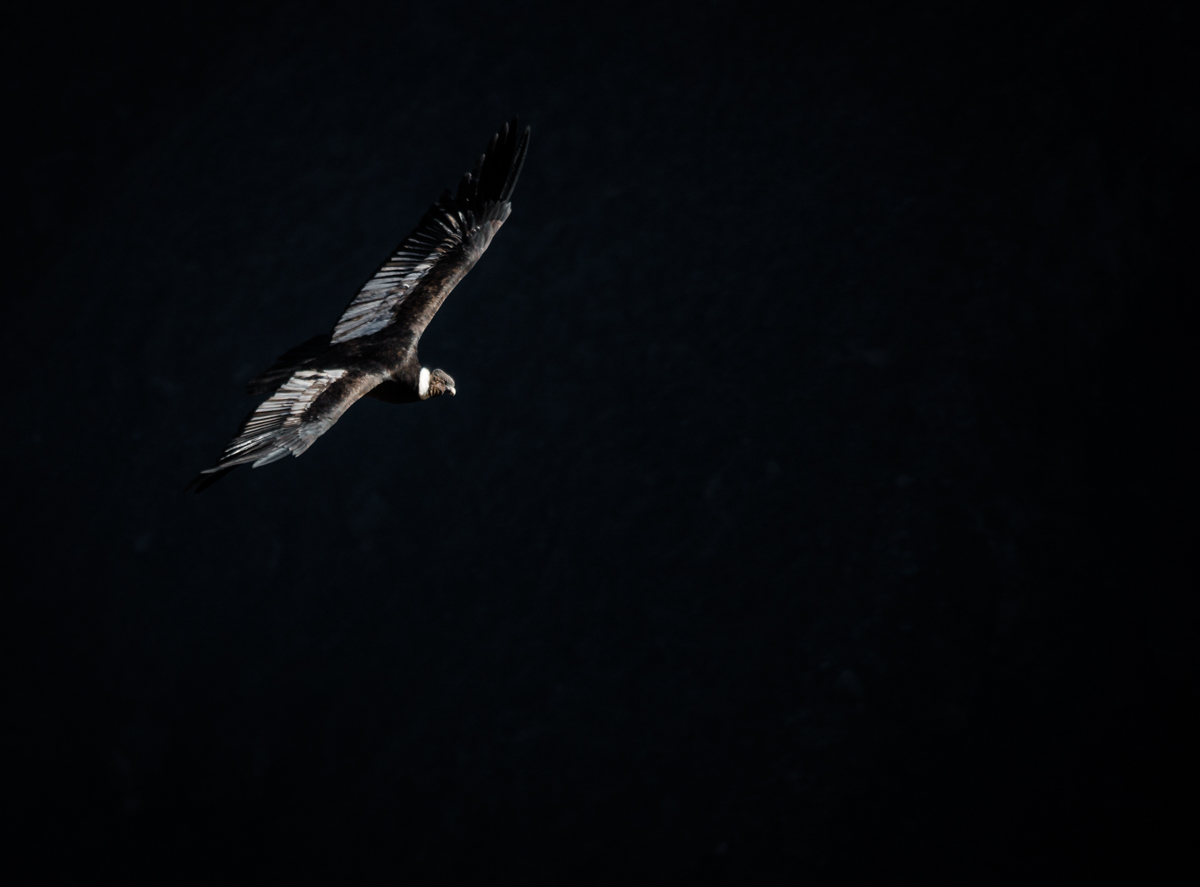Colca Canyon in southern Peru is a remarkable place. At over 10,000 feet from top to bottom it is one of the deepest canyons in the world (almost twice as deep as the Grand Canyon). Colca Canyon is as deep as the Pyrenees are tall. We spent a few days enjoying the incredible scenery and visiting some Incan and pre-Incan sites.

We weren’t in Colca Canyon for the scenery though. We were there for the vultures. Myself and my girlfriend (who was doing research in Peru) had made the trip up from Arequipa to see some Andean condors.
The Andean condor has huge cultural important for the peoples of South America. It is the national symbol of Bolivia, Chile, Colombia, Ecuador and Peru! In Incan and pre-Incan religions the condor was sacred; it represented the sky gods from the “upper world”.
These vultures are massive; they have a wingspan of over 3 meters! Males and females mate for life and can live for up to 75 years. The juveniles (up to five or six years) have dark brown feathers that turn black with white patches as they mature. The older males also have pretty impressive crests on their skulls.

The classic place to see these birds in Colca Canyon is at ‘Cruz del Condor’. This viewpoint, which sticks out into the canyon creating an overhang, is 1200 meters above the valley floor. As a result of the structure of the canyon walls, the thermal winds rise up in whirlwinds around Cruz del Condor. Every morning the condors use these thermals to rise up out of the canyon and high into the air to begin their search for food.

As we looked down into the dark canyon in shade, we began to see dark shapes soaring past. They would swoop in close to the canyon walls and then disappear for a few minutes. Every time they came back around, they would have become a little closer as they gradually rose up in the warming air. Eventually these gigantic condors were eye-to-eye with us. Soon they were just over above heads, casting shadows down on us.
Condors are found in the Andes mountain range from Argentina all the way up to Columbia. Their population is a fraction of what it used to be with only 2000 condors left in all of Peru. Habitat loss and poisoning (direct and indirect) have been two of the primary drivers behind this decline.

Andean condors play a key ecological role as scavengers. By cleaning up rotting carcasses that most other animals can’t eat they act as keystone species. At certain times of the year the condors leave the Andes and fly down to the Pacific coast to feed on sea lion carcasses. Thanks to huge conservation efforts these magnificent creatures are making a comeback. Hopefully, the sky gods will become a more common sight in the Andes in the years to come.
